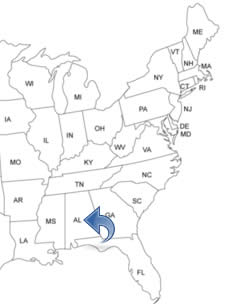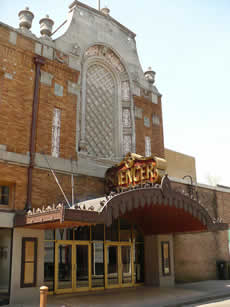ALABAMA PEOPLE SEARCH!
- ✔ Contact Info
- ✔ Phone Numbers
- ✔ Criminal Records
- ✔ Income Info
- ✔ Neighbors
- ✔ People's Age
- ✔ Property Ownership
- ✔ And Much More
Mobile, Alabama
Mobile is located on the Mobile River and the central Gulf Coast and is the second largest city in the U.S. state of Alabama. (Mobile and Huntsville have approximately the same number of population). The Port City. Mobile is a historic, diverse port city with a strong southern culture and heritage and is the county seat of Mobile County. The Port of Mobile is the only deep-water port in Alabama. Mobile's major industries are ship building, steel, aerospace, services, construction, medicine, and manufacturing.
To See And To Do In Mobile
- Legacy Village at Springhill Shopping Center
- The Mobile Museum of Art
- Gulf Coast Exploreum Science Center
- Bellingrath Gardens
- Historic Fort Conde
- Battleship Memorial Park
History Of Mobile - Timeline
Spanish explorers were sailing into the area of Mobile Bay in 1500 and the region was explored again in 1516 and in 1519. In 1528, the Spanish conqueror and soldier, Pánfilo de Narváez, fought the Native Americans in today's Mobile. In 1702, Mobile was founded as the capital of colonial French Louisiana. In 1703, the first Mardi Gras Carnival celebration in Mobile took place. It is the oldest annual Carnival celebration in the United States.
In 1721, ships sails from Africa into Mobile harbor with slaves. In 1723, Fort Conde was built to defend the settlers. In 1763, the British took control over the region. In 1780, the Spanish captured Mobile.
In 1811, the first Schools was established. In 1813, the daily newspaper the Press-Register was established. Also in 1813, Mobile was captured by American forces and became a part of the United States and was incorporated 1814. In 1823, the Christ Church Cathedral was established. In 1827, a fire destroyed most of the city. In 1833, the Oakleigh Historic Complex was built. In 1834, the Bishop Portier House was built.
In 1837, the Southern Hotel on Water Street was completed. In 1840, Mobile was second in cotton exports in the United States. In 1855, the Convent and Academy of the Visitation building was completed. In 1857, the Old City Hall was completed. In 1859, the Saint Paul's Episcopal Chapel was built. The Battle of Mobile Bay took place on August 5, 1864, in which a Federal fleet attacked a smaller Confederate fleet. In 1871, the Mobile Cotton Exchange was founded.
In 1900, more than 38,400 people were living in the city. In 1907, the Van Antwerp Building was completed. In 1927, the Saenger Theatre of Mobile opened. During the World War II, more than 89,000 people moved into Mobile to work for the war industries. In 1962, the work to build the Mobile Civic Center started. In 1963, the University of South Alabama was founded and the Mobile Museum of Art was established.
In 1964, the University of South Alabama opened as an integrated college. In 1974, the Mobile Botanical Gardens were founded. In 1981, a young African American man was murdered by two Ku Klux Klan members. In 1989, the Alabama School of Mathematics and Science was established. In 1997, the Hank Aaron Stadium opened.

